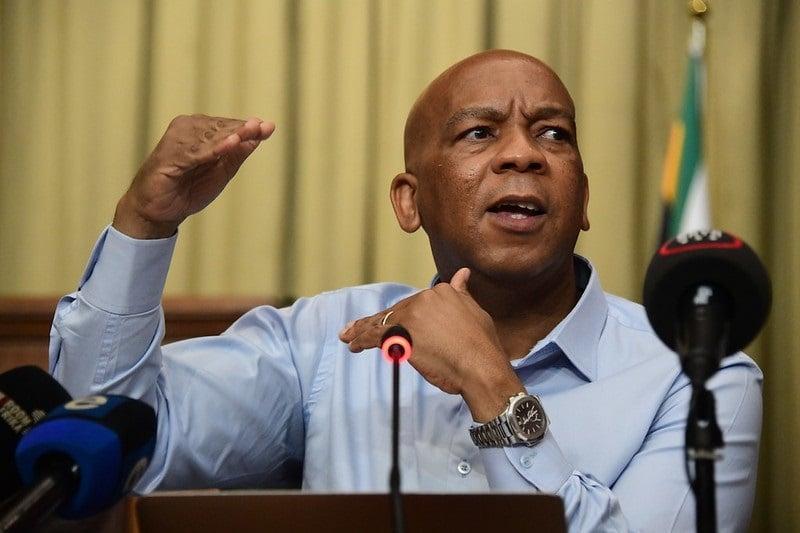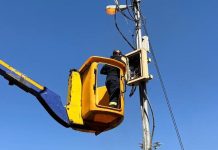
By Nick Wilson
Africa-Press – South-Africa. As SA braces itself for some of the coldest winter days yet, minister of electricity, Kgosientsho Ramokgopa, is confident significant improvements in the power generation system will allow Eskom to handle any additional surges in demand.
While the country has been fortunate to have had a relatively mild winter so far, minimum temperatures are expected to fall below zero in parts of Gauteng and the Western Cape and Eastern Cape from Monday and remain low for the rest of the week . Although this has prompted fears that the cold snap could result in more intensive load shedding experienced in recent weeks, Ramokgopa said on Sunday at a press briefing that the electricity system now had sufficient room to handle even the worst-case demand scenario during peak hours.
“The resolution of the load shedding issue is principally on your generation side. Even if demand were to surge to the worst-case scenario, if these machines were performing at the rate at which we were expecting them to, we shouldn’t have a problem. Even if it (demand) gets to 34 000MW or 36 000MW, we shouldn’t have a problem,” he said.
Originally at the beginning of winter, the utility forecast a peak in demand of 34 000MW during the winter season. However, so far the highest it had been was 30 800MW on one day earlier this month.
But even with the expected increase in demand as the days get colder this week, the system is expected to be able to handle it.
Presidency official Rudi Dicks, who also attended the briefing on Sunday, said that looking at the week ahead, the peak in demand “in a base case” scenario was expected to hit around 32 000MW, but that the latest “peak forecast puts it just over 30 000MW”.
“There is sufficient leeway within the system to deal with the peak and the differentials in the weather and the weather patterns that are there. That is what has been prepared for.”
Focus on generation improvement
Ramokgopa said the significant improvement the country had seen in load shedding in recent weeks was due to a major focus on improving generation to an average output of about 60%, which in turn allowed the energy utility to increase planned maintenance. Eskom was also making use of the expertise of more than 100 private sector experts, with Ramokgopa adding the utility was “beginning to see the fruits of their labour”.
“We really want to express our appreciation to the business sector, the private sector for making it possible for us to draw from of the most competent, skilled and experienced people in the energy sector who have been working with us embedded in the various power stations, in the various workstreams that support the work of the recovery of the energy sector.”
He said an important benefit of bringing on board the expertise from the private sector was that they were able to “transmit their knowledge and exchange it with the station managers and some of the junior engineers so they are able to run on their own”.
“When we come out of this very difficult electricity situation we will be more than confident that we have a cadre of young engineers at Eskom who fully understand how these machines operate and they will have in part accumulated that from the learnings they would have derived from the kind of expertise that we have been able to assemble.”
He said the private sector was invested in finding a solution to the energy crisis, adding they would not be able to make an investment case for their companies, or expand their competitiveness or productivity in the absence of one.
Where important strides had been made was in the country’s energy availability factor, which was sitting at approximately 60% thanks to improving generation capacity.
Ramokgopa said the improving generation capacity created additional space to do more planned maintenance, adding that on just on Friday 7 July alone, it had been able to take out double the amount of megawatts for planned maintenance, some 5 284MW.
“This is planned and this is by design, this is voluntary. We could have chosen not to but we have chosen to take it out and we are not seeing it aggravating the load shedding in the country.”.
As things now stand SA is managing a “permutation” of load shedding stages 0 to 3 or 1 to 3.
“Either no load shedding between midnight and 4pm, and then we introduce it during the evening peak because evening peak is more severe than the morning peak, or we introduce stage 1 load shedding midnight until 4pm and then we ramp it up to stage 3 during the evening peak starting at 4pm. And with that combination, we have been able to take out twice the number of megawatts that we have planned and this is testimony to the fact that this recovery is sustainable, this recovery is enduring.”
Improvements not due to “act of God”
He said improvements in load shedding were not “due to an act of God”, but because of interventions made by the government and businesses in keeping load shedding at lower stages. At the same time, aggressive campaigns to encourage households to cut down on electricity usage to ease pressure on the grid had also being paying off.
Another positive was the degree to which the utility had managed to reduce the number of electricity trips, with Ramokgopa saying that originally when the winter plan for Eskom was introduced, the base case scenario was to keep the number of trips or failing units to 15 000 MW.
“And we can see that consistently we have been right at 15 000MW or less and one of the days, we even recorded just below 14 000MW. It is the consistency of the application of this strategy to ensure that we do everything meticulously, thoroughly – we are deliberate and robust in the manner in which we are able to address this.”
A key improvement was also noted in outage slips, which occur when Eskom is not able to return a unit to service on schedule. Ramokgopa said that when the president first introduced the electricity ministry portfolio, outage slippage accounted for some 2900MW, which was “almost three stages of load shedding”. This was now sitting at 1 351MW, which “we want to improve” further.
“It is a function of the expertise that is sitting with us. It is a function of us working with the original equipment manufacturers, it is a function of us understanding the units better and applying a degree of science.”
For More News And Analysis About South-Africa Follow Africa-Press





